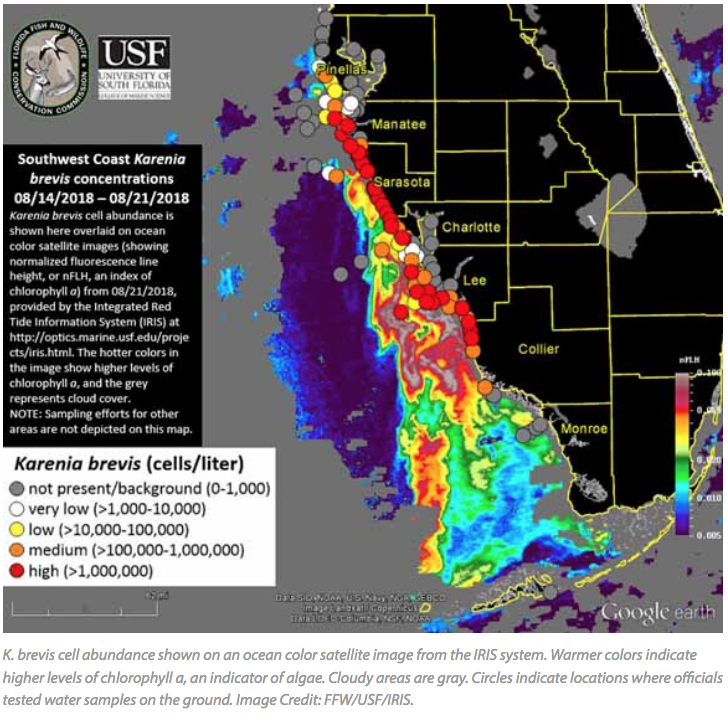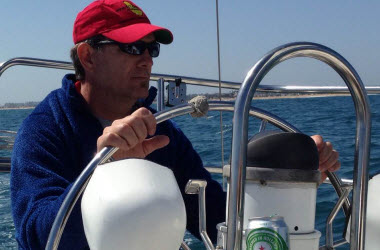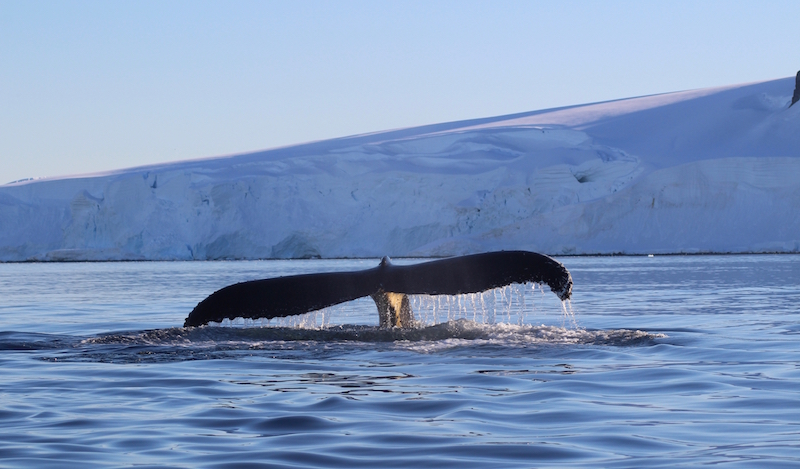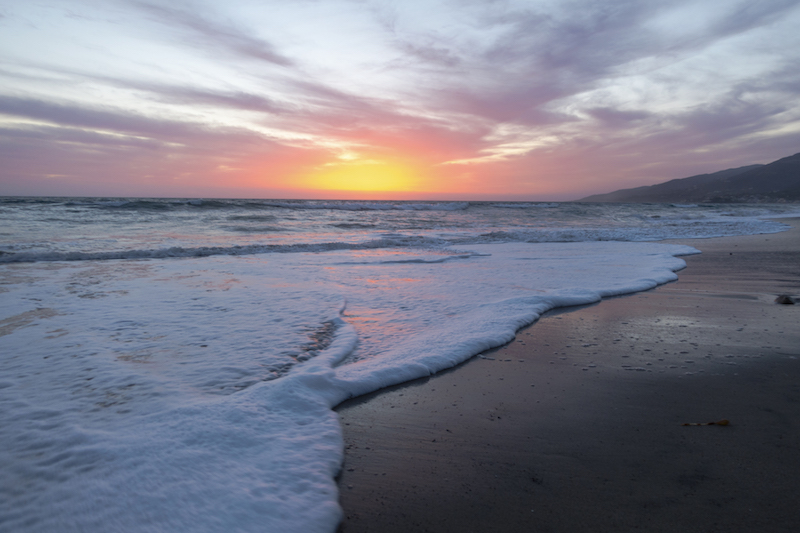August 28, 2018
Florida has been hit with an extraordinarily large bloom of red algae. Every year, Florida experiences a bloom of red algae, known as “Red Tide”, but this latest bloom has been so large that it is causing problems. Florida’s governor has even declared a state of emergency for seven counties.

Karenia brevis, the algae that causes the annual red tide, comes from the Gulf of Mexico. It blooms off the coast of Florida normally in the late spring or early fall. The current bloom started in October 2017 and has continued to expand. Besides the usual downsides of a large algae bloom, Karenia brevis produces brevetoxins, which kills marine animals and can cause health problems for humans. When wave action breaks apart the cells of the Karenia brevis, the brevetoxins can become airborne and cause respiratory problems.
Normally, wind and currents will dissipate the “Red Tide”, but there is a new possible threat looming. A non-toxic “Brown Tide” also occurs off the coastal waters of Florida and it is feared that after the “Brown Tide” has dissipated the “Red Tide” could feed off of the nutrients left behind.
Unfortunately, these algae blooms have taken their toll on the wildlife killing a large amount of fish and even some larger marine animals, such as turtles, manatees, and dolphins. In addition to the harmful effects “Red Tide” has taken on the waters around Florida, it has a significant economic impact. Areas where tourism normally abounds are anemic and businesses are struggling.
Just as with Sargassum, see Cathy’s blog post, it is believed that nutrient run off and climate change are exacerbating the algae blooms. Just as we can cause problems for nature, nature can return the problems to us. Instead of dealing with an influx of summer tourism, Florida needs to find ways to deal with the influx of Red Tide.
Besides just cleaning up beaches and waiting for the “Red Tide” to dissipate, can you think of any proactive ways to help with managing the algae bloom? Are there any innovative technologies you can imagine to curb the annual “Red Tide”? Check out these every day solutions provided by Mote Marine Lab to reduce the human element from these deadly tides.



